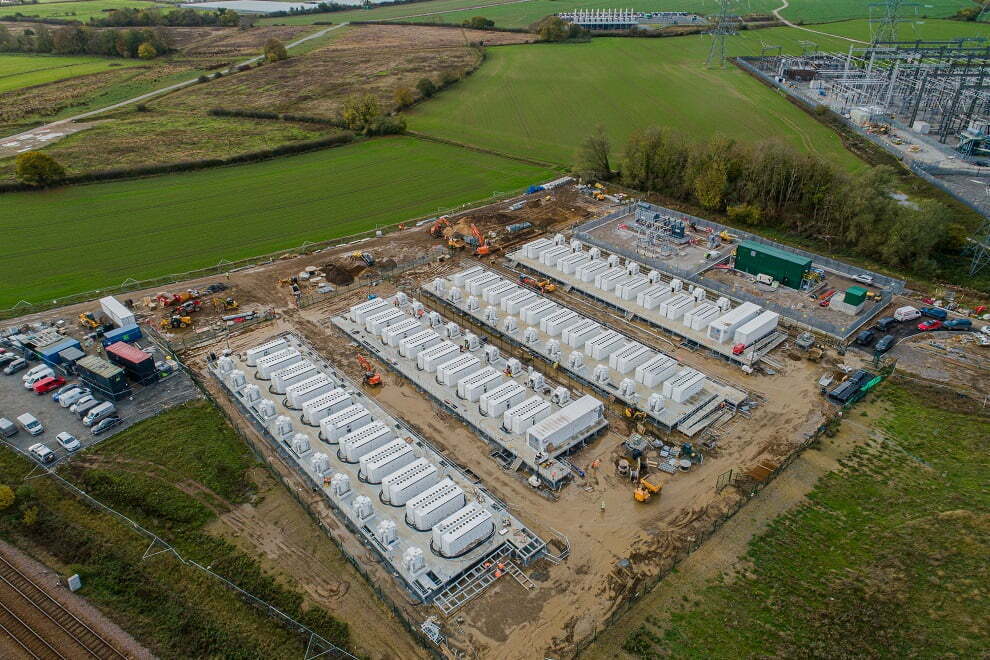
Europe’s energy crisis has resulted in high frequency regulation ancillary services revenues for battery storage, with some assets earning up to four times more money than had been expected.
However, prospective investors should not see this year’s unlikely situation as a guide for how the market will operate in the long-term, and battery assets will have to diversify their applications beyond ancillary services in the coming years.
That was the estimation of Corentin Baschet, lead analyst at energy storage consultancy Clean Horizon. Baschet analysed revenues available for energy storage across multiple European geographies, with a particular focus on the eight-country frequency containment reserve (FCR) market, the UK’s Dynamic Containment Low service and secondary reserve, or aFRR in Belgium.
In FCR, Baschet found that the energy crisis led to battery energy storage system (BESS) projects earning “in a year, about three to four times the expected cashflows planned initially”.
High gas prices or low availability of nuclear generation – as has been the case in France – result in higher prices on wholesale markets. That means a higher opportunity cost for conventional generators to provide ancillary services.
From January 2021 to the end of September this year, the average FCR price was €24.6/MW/h (US$25.48/MW/hr).
By comparison, in 2015 it was around €26/MW/hr, €17/MW/hr in 2017 and at a low of €5/MW/hr in early 2020.
High prices are unlikely to persist, Baschet said, and events like the crisis this year are difficult if not impossible to accurately factor into revenue forecasting models.
“When things go back to normal, we will see prices of ancillary services reduce drastically. We recommend investors not to make investment decisions based on current market prices which should not last very long, according to the forward curves we provide with [commodities market consultancy] KPLER,” Baschet said.
FCR auctions in the eight countries – which include France, Germany and Switzerland – equate to a total volume of 1500MW procured by transmission system operators (TSO). Yet in just France and Germany alone, there are 1,100MW of installed battery storage systems, 400MW in France and 700MW in Germany, with more on the way.
Fast energy storage deployment in those two countries is about to saturate the FCR market, and Clean Horizon expected the next few months will prove those high prices to have been short lived.
“This auction is currently pay-as-clear, so the marginal asset is the price maker. However fast storage deployment across Germany and France is about to saturate the FCR market, therefore resulting in the marginal asset to be kicked out of the merit order and making batteries the marginal assets therefore soon resulting in much lower prices,” Baschet said.
‘Revenue cannibalisation is real’
Similarly, in Great Britain, the Dynamic Containment Low frequency regulation product launched a year or two ago by TSO National Grid is the single biggest source of BESS revenues but is running close to saturation.
Revenues for the ancillary service averaged out at £19/MW/hr (US$22.79/MW/hr) across the period surveyed. Clean Horizon modelled that while the revenue stack for a UK battery asset typically comprised five different revenue streams, Dynamic Containment revenue accounted for around £141,700/MW/year of a £155,100/MW/year total.
Meanwhile, National Grid procures between 500MW and 2,000MW of Dynamic Containment through auctions, in a country which has already come close to the 2,000MW mark of installed BESS.
In continental Europe as well as in the UK therefore, BESS asset owners will have to diversify their route to market strategies to maximise revenue and market share, Baschet said. In the UK, BESS assets are already starting to shift to doing more energy arbitrage, while FCR asset owners in Europe will also have to be able to provide different applications to what their BESS system or potfolio was planned for.
“Typically, it is clear that batteries will have to move from power revenues, associated with FCR or DC, to energy revenues associated to trading on the day ahead or intraday or imbalance markets as these markets are deeper,” Baschet said.
“Revenue cannibalisation for storage is a real thing.”
Investors ‘can be comfortable with merchant business case’
Last year, Clean Horizon discussed the introduction of automatic frequency restoration reserve (aFRR), successor to the European secondary reserve ancillary service market. Belgium, along with France and Germany is one of the earlier countries to join a coordinated market that will span most of the continent by 2024.
With Clean Horizon having spoken previously of the potential for high returns for battery storage in Belgium, Corentin Baschet pointed out that the marginal price of monthly auctions for aFRR has been “very high, linked to high price of gas and the opportunity cost of gas assets to participate in the wholesale markets”.
Yearly average prices in Belgium for aFRR have been €142.2/MW/hr, according to figures taken from the country’s grid operator, Elia. Corentin Baschet previously told Energy-Storage.news in March that Clean Horizon believed battery storage could capture a third of the total aFRR market across Europe which is estimated to be around 1.5GW to 2GW.
Energy storage’s great strength lies with being able to support the electricity system in times of both normal and challenged operating conditions. Helping to balance volatility on the grid can therefore be more lucrative during those challenges.
Investors like to have steady expectations of their cash flows and building a business case around energy storage in Europe is still difficult due to the merchant nature of opportunities, Baschet said.
“However, it is possible to be comfortable with price forecasts if the assumptions of the models are well understood as well as their impact on the results,” the analyst said.
Energy-Storage.news’ publisher Solar Media will host the 8th annual Energy Storage Summit EU in London, 22-23 February 2023. This year it is moving to a larger venue, bringing together Europe’s leading investors, policymakers, developers, utilities, energy buyers and service providers all in one place. Visit the official site for more info.


